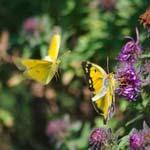Aldo's Idea of "Thinking Like a Mountain" has its Roots in the Bottomlands of Iowa and Illinois.
Youthful Discoveries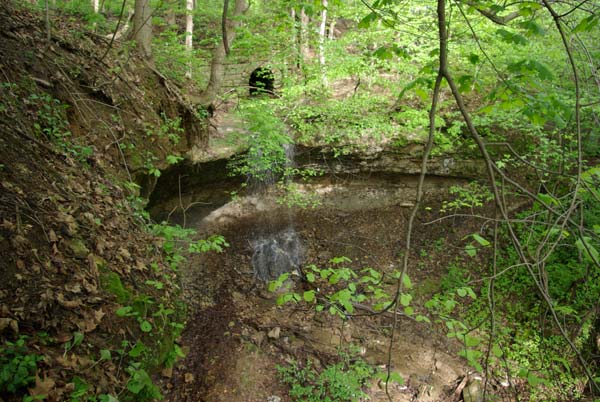
At an early age, Aldo discovered a personal freedom in the wild places around Burlington. Surprises and discovery during repeated visits to local wild spots became memorable experiences and Aldo delighted in anticipating the next 'tramp'. At the age of 11, he wrote one of his first essays-- about monitoring the 13 wren nests in their yard.
"I like the wren best of all birds. We had 13 nests of wrens in our yard last summer. We hatched 120 young wrens. I like wrens because they do more good than almost any other bird." Aldo at 11, in 1898
This youthful quote provides an interesting base to compare the growth of values throughout Leopold's life.
His parents and grandparents stimulated his imagination by connecting the humanities to nature -- using art, music, literature, gardening and practical agriculture as ways to help understand his environment. Mother Clara insisted the children write down their observations and feelings about discoveries in nature. When Aldo went away to school and on to his career as a forester in the Southwest, he continued to write home about his experiences and the value of nature in his life. Later, his early discoveries resurfaced in his professional writings, and reflections on his youth became a key to understanding why nature is so important to humanity.
His early notes led to journals and daily observations of phenology, then emerged as A Sand County Almanac.
"Psychologists say that emotional attachments or the ability to bond forms in one's early years, and this is true also of our bonding to nature. Aldo Leopold's formative years with his family's guidance and wild places were beloved, giving him a bond and openness to all wild places and ideas that came later in his life. HIs letters are filled with this love, and we all can experience with him this same delight and attachment if we preserve and retrace his experiences at the Leopold Home compound. Aldo's life and love of adventure, began in Burlington, as ours can, if we save his seminal places for this and future generations. Congratulations to the Leopold Landscape Alliance, for their leadership on behalf of the native son." --Marybeth Lorbiecki, Leopold biographer and children's book author

Leopold's Relevance for our Children Today
When we trace the sources of Leopold's values all the way back to childhood, it helps us see how his life can be relevant to our children today. Using his life as a model could help children & parents balance our increasingly technological culture with nature.
The new Aldo Leopold Middle School provided an important opportunity to show how reconstructed natural places close to home and school can serve modern society in a manner similar to the old days when there was less development and more places for children to explore.
Because of their namesake, the school leadership and the school district understood that the undeveloped ground in front was a place where Leopold's interests and values could be displayed for classes and neighbors.
With the help of the Leopold Heritage Group (the group the Alliance branched out from), a two acre outdoor prairie classroom was developed where students can integrate nature into their studies. The concept includes winding paths leading through reconstructed prairie to rock outcrop enclosures for classrooms. Repeated visits to wild places close to home and school, in different seasons and weather reveal surprises in nature. When children have a chance to spend time outdoors and see wild nature up close, they discover, learn and broaden their world.
The School demonstration prairie includes several types of soil condition to increase the plant and animal diversity, and to favor certain ecological relationships that Aldo wrote about. Clay, sand, gravel and limestone were used in the berms, so we can learn more about Aldo's favorite plants and animals on this site.
A Sand County Almanac is so broad and rich that many of Aldo's pages connect with classroom subjects, as well as out in the prairie. It's easy to see how science classes relate to an outdoor classroom because of the wide variety of plants and animals displayed. However, reading any of Leopold's essays quickly illustrates how literature, history, sociology, math, music and art bring a new relationship between culture and nature.
Setting a Pattern for Life
These humanit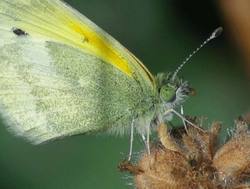 ies offer insights to how closely related nature is to the evolution of human culture. Much writing, music and art is hinged to impressions from nature in ways that the majority of us are removed from today. By connecting humanities to nature, especially through reading the experiences of others in nature, we provide students and adults with opportunities to better understand the historical and cultural context of why nature is so important to humans. Traveling into the landscape with the perspective of historians, scientists, naturalists, poets and musicians will open our senses to important elements we too often miss.
ies offer insights to how closely related nature is to the evolution of human culture. Much writing, music and art is hinged to impressions from nature in ways that the majority of us are removed from today. By connecting humanities to nature, especially through reading the experiences of others in nature, we provide students and adults with opportunities to better understand the historical and cultural context of why nature is so important to humans. Traveling into the landscape with the perspective of historians, scientists, naturalists, poets and musicians will open our senses to important elements we too often miss.
In today's modern communities we can't experience large scale nature in the same manner as earlier generations. We don't get the excitement of large mammals and vast prairies or dense forests. It's a bit ironic that through today's technological advances we can gain wonderful insights into the wild nature of smaller scale relationships, like wildflowers and pollinators or birds and insets. The photos you see here from the Leopold Prairie Classroom capture details difficult to observe without the aid of stop action photography--the small scale and flighty speed of the critters,
When children see details of nature up close, as can be captured with today's cameras, it enlarges their world view. Realizing natural history through new found surprises, discovery and anticipation during outdoor adventures sets a pattern for life. Inspiration and renewal experienced in the wild, in a similar manner to Leopold's frequent tramps, help reinforce a caring attitude for the environment. When we know more about something, we tend to love it and protect it.
Read more about the Leopold School Prairie in the Conservation Section.
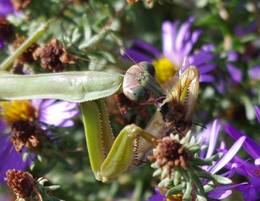

"Leopold's deep insight that land is a community led to an ethic so broad that it encompasses everything, from soils, water, plants, wildlife and people. By preserving Leopold's childhood home and celebrating his Burlington roots, the Leopold Landscape Alliance brings fresh insights into how his character, ideas, and moral courage evolved through lifelong connections with family and natural wonders on the bluffs above the Mississippi."
Julie Dunlap, children's book author, Aldo Leopold: Living with the Land, and co-editor (with Stephen R. Kellert) Companions in Wonder: Children and Adults Exploring Nature Together
"Every page of a 'A Sand County Almanac' has one thing in common whether it is openly stated or not. That thing is perception and the need to move through the landscape with an expanding sense of the smallest details and the largest relationships."
"The rocky recesses and bottomland woods near Aldo Leopold's childhood home provided sudden encounters, drawing him back to see what was new. His family emphasized the outdoor arts of sketching, mapping, reading sign, and the pursuit of wildness. Before he left Burlington for studies in the East and beyond, Leopold had already acquired an awareness of his increasing perception skills and an idea of the role nature plays in nourishing the human spirit." - "Youthful Discoveries", Steve Brower, The Leopold Outlook, ALF, Winter 2011.

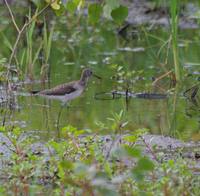
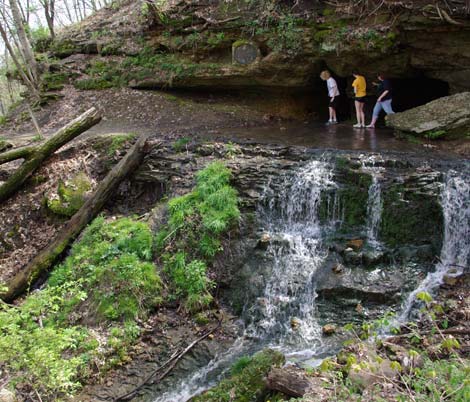
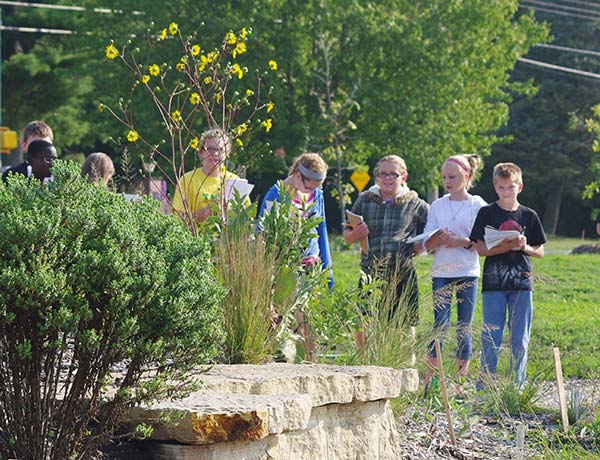 Students in the Aldo Leopold School Prairie Classroom, learning the difference between prairie dock and compass plant.
Students in the Aldo Leopold School Prairie Classroom, learning the difference between prairie dock and compass plant.